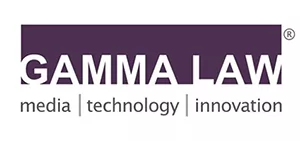Non-fungible tokens (NFTs) are quickly establishing themselves as one of the fastest-growing and most innovative advertising media. "NFT" is now a key marketing buzzword, with Collins Dictionary naming it the 2021 Word of the Year.
From just $95 million in 2020, the NFT market exploded in 2021, reaching a total sales volume of $25 billion. This article will discuss how emerging technology companies and even mainstream consumer brands can engage their consumers through NFT marketing.
NFT marketing, too, has come to the fore as regulators struggle to find ways to protect consumers and bring a semblance of order to the NFT space. Businesses exploring ways to use NFTs in their marketing programs should take care that their tokens are not issued to create an expectation of profit to the buyer based on the efforts of others. Beyond that caveat, an attorney experienced with digital assets and technology regulation can assist businesses in their efforts to leverage the power of NFT marketing.
NFTs, like other digital assets, include metadata and security codes embedded in cryptographic authentication and blockchain technology. These digital works of art, collectibles, video and audio clips, virtual real estate, gaming resources, and other "property" may or may not include the right to leverage the intellectual property or "real-world" entity they represent. Those that do carry tangible benefits that extend well beyond any speculative value that may or may not be realized due to market sentiment. These NFTs also are more likely to remain on the unregulated side of the playing field if the Securities and Exchange Commision or another nation's regulators decide that some NFTs behave as securities and therefore should be monitored and taxed as such.
Here is how companies can implement NFTs into their marketing strategy.
Create a Meaningful Story by Connecting NFT to your Brand
There is always a story behind everything brands attempt to accomplish. Many brands try to engage users through Discord or other onboarding platforms. However, they may quickly realize that it is better to understand their audience and its identity. Originality is key. Engage your audience by telling a story it can relate to. Cryptocurrency/ NFTs are not only for hardcore users. When you speak their language, people will love it too. They enable companies to tell their story using controlled, managed messaging that delivers several benefits:
- Establishing intimate, emotional, personal connections with the community
- Empowering customers by giving them a say in the brand's mission and direction
- Ending to the "fake it 'til you make it" mentality by demonstrating authenticity and exclusivity.
- Rewarding loyal customers for their time and effort
- Engaging followers with the company's vision, leadership and raison d'etre
In today's digital age, NFTs go beyond collectibles and art. For example, OG Esports dropped its third NFT at Binance. In place of trading cards, the organization used NFTs to tell the story of an OG astronaut's landing on Binance. A pioneer of Esports organizations, OG Esports understands how NFTs can benefit their followers. The release of fan tokens and other NFT-related projects allows OG Esports to interact with its community more effectively and generate more revenue.
Use NFTs as a Medium and Take Advantage of Their Marketing Utility
Brands reach a wider audience by joining NFT marketplaces. These diverse communities composed of digital creators, art collectors, young and experienced entrepreneurs, and a wide range of other participants are eager to engage, thanks to NFTs' novelty and real-world profit potential As brands create more NFTs, they raise their profiles in the community and quickly become part of the conversation. The customer base will expand, presenting a larger pool of potential buyers that increases the likelihood of closing a sale. Brands can connect with their audience through NFTs in a way that no other marketing medium can provide.
A successful brand's marketing contributes to its legacy, distinguishing temporary fads from long-term successes. Look at NFTs as a medium (with lots of utilities) for the marketing message and delivery mechanism, rather than being the message itself.
Video game producers, extended reality content generators, musicians, artists, and digital transformers can use NFTs as part of their marketing efforts, advertisements, analytical tools, billboards, and other marketing media. This is one of the best ways to leverage NFTs to create long-term business value.
Mobilizing NFTs in Marketing
NFTs are far more than jpeg images linked to blockchains - they provide utility to your audience and brand strategy. Savvy brands follow marketing best practices to squeeze the most value from their NFT campaigns:
- Identifying the audience's inner thoughts and feelings, not just its demographics
- Performing due diligence to protect their own and avoid infringing on others' intellectual property rights
- Using a story to connect the brand to the audience
- Making the story and the brand accessible across channels
As an example of doing things right, Warner Bros. used the Nifty social NFT platform to announce the availability of avatars via blockchain to promote the fourth installment in its successful Matrix franchise, The Matrix: Resurrections. With the NFT collection, fans could choose to keep their avatar in the matrix by swallowing the "Blue Pill" or becoming a resistance fighter by choosing the "Red Pill." It proved a great way to generate hype and engage fans and customers around the film's premiere
Like buying physical action figures or baseball cards, the process allows the original consumers to sell or trade their avatars, creating scarcity and value.
Experient, but Monitor the Market and Do Not Compromise on Authenticity
For marketers contemplating their first foray into NFTs and Web3, this new space may seem daunting. Observing what works and pitfalls trip up early adopters can help brands figure out how to proceed. This new paradigm favors the bold, offering immeasurable rewards for earnest adoption and experimentation than did earlier iterations of web technology. But consumers can spot a fraud a mile away. Trying to appear part of a community by co-opting NFT protocols in social media posts may backfire, making brands seem out of touch and token NFT art collection efforts will probably not resonate any more than dot-com era vanity websites.
Fortunately, the NFT universe will coalesce over the next few years, so there's plenty of time for emerging media and technology firms to figure out how to incorporate them into their marketing tactics. A business's prospective NFT customers should include not just the crypto community, but anyone who could benefit from the products and services offered.The prices a commercial concern's NFTs fetch on OpenSea shouldn't be the measure of the company's success. Instead, they should focus on metrics that can better illustrate a future in which NFTs anchor all real-world products and experiences with digital extensions.
What Is the Value of NFTs in Marketing?
Brands may have difficulty selling NFTs because they are risky. The future is unclear, and it is too early to estimate their impact. But many of those who have used it have seen great success.
Based on HubSpot Blog Research, 39 percent of NFT users say their NFTs have the highest ROI among their advertising investments. More than one in sevel say they plan to use NFTs for the first time in 2022. Brands benefit from more trackable incentives through Web3 and NFTs. The brand and goals will determine whether this is valuable. One thing is sure, though: It's definitely worth watching.
The content of this article is intended to provide a general guide to the subject matter. Specialist advice should be sought about your specific circumstances.

